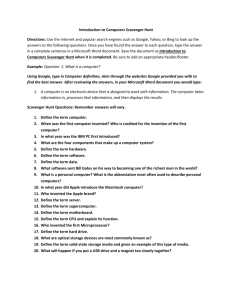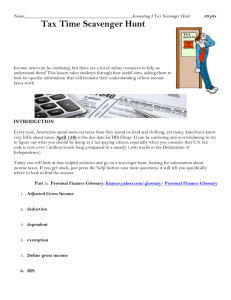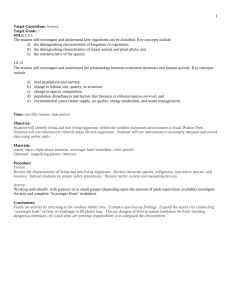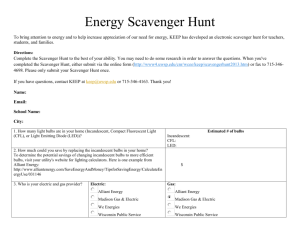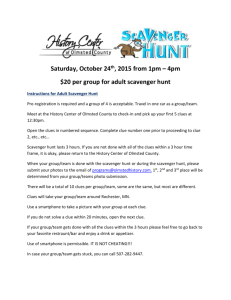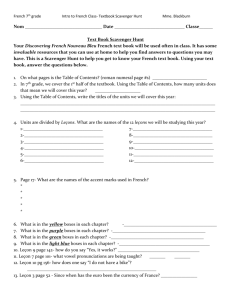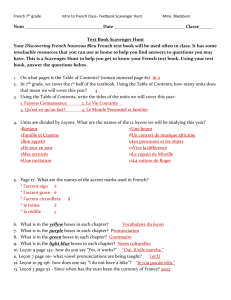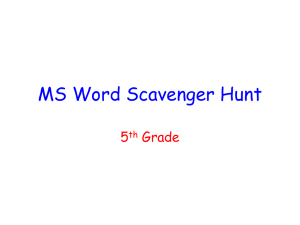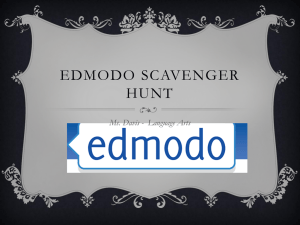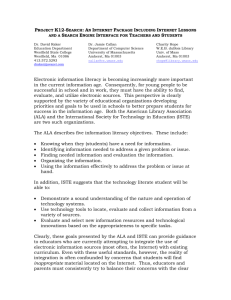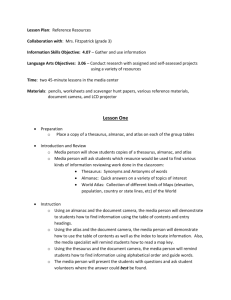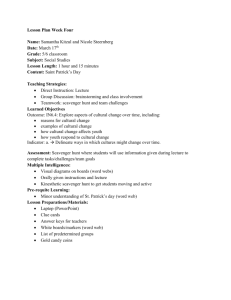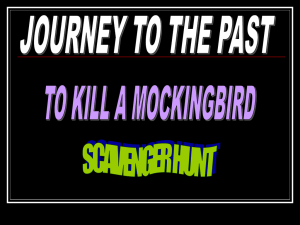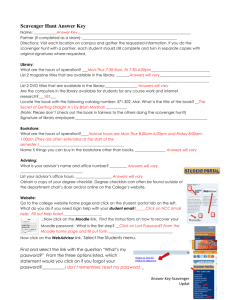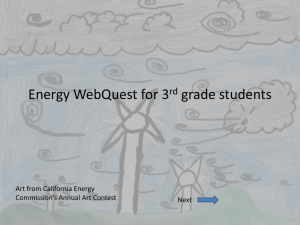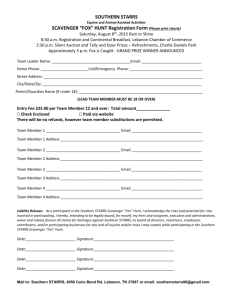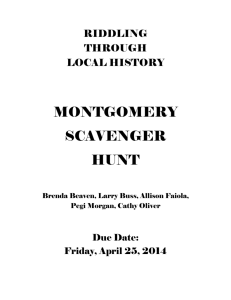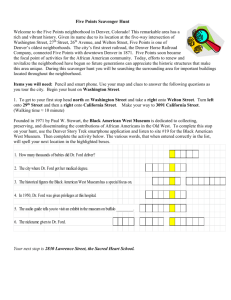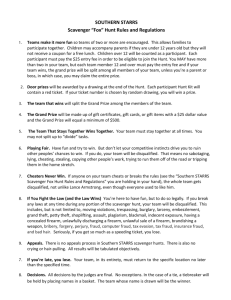Lesson
advertisement
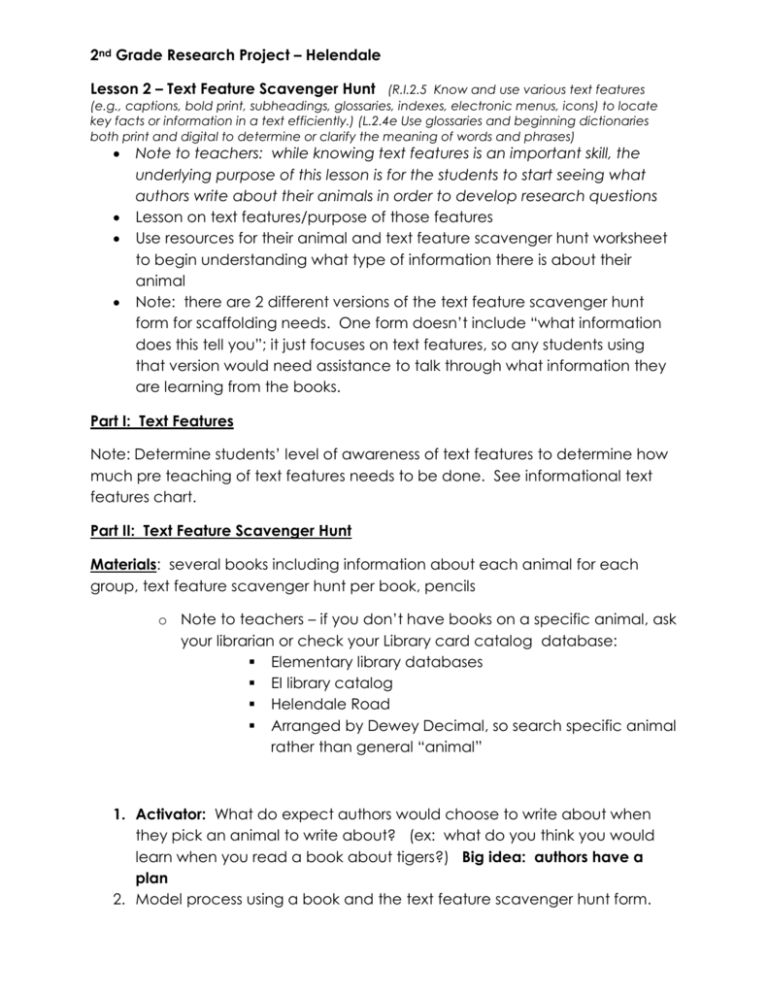
2nd Grade Research Project – Helendale Lesson 2 – Text Feature Scavenger Hunt (R.I.2.5 Know and use various text features (e.g., captions, bold print, subheadings, glossaries, indexes, electronic menus, icons) to locate key facts or information in a text efficiently.) (L.2.4e Use glossaries and beginning dictionaries both print and digital to determine or clarify the meaning of words and phrases) Note to teachers: while knowing text features is an important skill, the underlying purpose of this lesson is for the students to start seeing what authors write about their animals in order to develop research questions Lesson on text features/purpose of those features Use resources for their animal and text feature scavenger hunt worksheet to begin understanding what type of information there is about their animal Note: there are 2 different versions of the text feature scavenger hunt form for scaffolding needs. One form doesn’t include “what information does this tell you”; it just focuses on text features, so any students using that version would need assistance to talk through what information they are learning from the books. Part I: Text Features Note: Determine students’ level of awareness of text features to determine how much pre teaching of text features needs to be done. See informational text features chart. Part II: Text Feature Scavenger Hunt Materials: several books including information about each animal for each group, text feature scavenger hunt per book, pencils o Note to teachers – if you don’t have books on a specific animal, ask your librarian or check your Library card catalog database: Elementary library databases EI library catalog Helendale Road Arranged by Dewey Decimal, so search specific animal rather than general “animal” 1. Activator: What do expect authors would choose to write about when they pick an animal to write about? (ex: what do you think you would learn when you read a book about tigers?) Big idea: authors have a plan 2. Model process using a book and the text feature scavenger hunt form. Books use agreed upon text features to help readers understand information and how to find information Kids will need help understanding the part of the form “What information does this tell you.” The purpose of this is for students to gather what type of information is available (what authors choose to inform readers about) 3. Students work in identified pairs based on their animal. 4. Give books to students based on their animals (2 - 3 books) and independent work time. 5. Note: kids need a form for each book (unless using the scaffolded graphic organizer Part III: Closure 1. Bring kids to rug. 2. Ask students how many of their books had: Table of contents Glossary Etc This will reinforce non-fiction texts have similar features 3. What couldn’t you find on your list? Why do you think the author didn’t include this? This will reinforce that information can be displayed differently in different books, but it still has information 4. What types of information did the authors include? We don’t want specific facts, but categories of information Ex: what my animal eats as opposed polar bears eat seals Possible Categories: predators, habitat, adaptations, diet, life cycle, habits, description, Name______________________________ Date_______________ Text Feature Scavenger Hunt Book__________________________________________________________ Text feature table of contents glossary index pronunciation guide photos drawings magnification titles headings subheadings What information does it tell you? Page number bullets italics captions labels bold print sidebar charts/tables maps graphs diagram time-line Name______________________________ Date_______________ Text Feature Scavenger Hunt Book #1________________________________________ Book #2________________________________________ Book #3________________________________________ Text feature Book #1 table of contents glossary index pronunciation guide photos drawings magnification titles headings Pg# Book #2 Pg# Book #3 Pg# Text feature Book #1 subheadings bullets italics captions labels bold print sidebar charts/tables maps graphs diagram time-line Pg# Book #2 Pg# Book #3 Pg#
